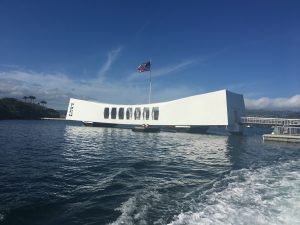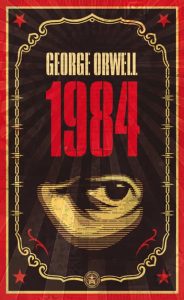History is a broad topic that we have begun to tackle in our PLP class. To start off we created our own definitions of what history means rather than basing our knowledge on some Wikipedia or dictionary definition. The definitions our class created in groups are listed below.
1. History is a biography of humanity and our past chronicles made up of what we remember, not what we thought. = memory
2. History is often the worst parts of the past that we are able to recognize in the present. = repetition
3. History is a study of the past looked at by a new perspective, often written by the victors. = perspective
4. History is a collection of interpreted, undefined events that gives purpose to our lives and our future. = purpose
5. The study of history tells a story of past events based on knowledgeable investigation. = knowledgeable investigation
6. History is a study of the past told through a narration of events that allows for a dialogue between the past and present, further establishing our knowledge of people and major events. = narration and dialogue
Each of those six groups were tasked with creating an informative presentation to the class discussing and explaining one of the six lenses we use to look at history. These were history significance, evidence and interpretation, continuity and change, cause and consequence, historical perspective, and ethical judgement. My group presented on evidence and interpretation. We discussed how you are supposed to properly interpret historical events using primary sources as evidence. As a group we decided to talk about the atomic bombs dropping on Japan in WWII to support our points, show, and explain how evidence is used.

These six lenses I have chose to interpret and show through an image I have created. Starting with history significance, I chose to explain it using two hands shaking as a symbol. In order to understand history significance you must ask these questions, what and who should be remembered in history? How notable was the event at the time? Were there consequences? Was it symbolic of key historic issues? For evidence and interpretation I chose to symbolize it through old letters as they are primary sources and some of the best type of evidence to look at when interpreting a historic event. However, you should remember to ask these three questions while looking through evidence, can we trust the source of information? Do the sources provide relevant evidence to the questions that we hope to answer? Does the evidence support the interpretation offered? Continuity and change discuses how things have stayed the same or changed. We ask were the continuities and changes positive or negative, in order to asses the situation better. Also, did any of these changes make turning points in the course of history? For this I chose to represent it with an image of a plant growing up. Assessing the cause and consequence means you have to think about what the range of factors that contributed to the event were. You must ask, would this event still have happened if these factors hadn’t occurred? What were the intended and unintended consequences of the event? However, our opinions of an event can change over time. I chose to use glasses as a symbol for this historical lens. Historical perspective means to understand the social, cultural, intellectual and emotional lenses of the time. Think of these things when analyzing the historical perspective. Consider what you know from a present perspective. Identify the values and beliefs from when the event took place. Determine whether your views of the past were influenced by the present evidence. I chose to symbolize it using a pair of glasses. Ethical judgment is used by asking is what I’m doing okay? Are ethical judgments included in the historical accounts you are studying? Are the ethical judgements reasonable or justifiable? I symbolized this with an image of a balancer. It shows that the good and the bad can sometimes way each other out.
Pearl Harbour:
The attack on Pearl Harbor was a surprise military strike by the Imperial Japanese Navy Air Service against the United States naval base at Pearl Harbor, Hawaii Territory, on the morning of December 7, 1941. The attack, also known as the Battle of Pearl Harbor led to the United States’ entry into World War II.
 History significance:
History significance:
The significance of Peal Harbor was not that the American people were attacked, but that they came together and grew stronger. The significance of this event was that it made the American people into one United States. On Dec. 7, 1941, the American people’s perception of themselves was changed forever. The average citizen suddenly became an immensely important part of a huge, intricately woven country full of a people who wanted not only to help each other, but to help the world against a great evil. The attacks on Pearl Harbor still invoke feelings of patriotism and sadness. It is an event considered a turning point in American history, and it is an event that every child learns of and respects. A memorial is placed at the sight of the attack located in Oahu, Hawaii. Visitors are constantly flowing through, and from my experience the tickets to see the memorial always sell out early in the morning. People from all over the world come to this site to remember, respect, and learn about the tragedies that went down on Dec 7, 1941.
Evidence and interpretation:
Ever since the Japanese attack there has been debate as to how and why the United States had been caught off guard, and how much and when American officials knew of Japanese plans for an attack. A newspaper article states that Japan might attack. As to why America did not take this as a warning and prepare to defend, we don’t know. This was a public newspaper that was publishes, it is a very trusted source. Some conspirers believe that the U.S government wanted Japan to attack so the Americans would have a motivation to join the war in order to help the British win the war. The news paper article states that Japan may attack however, it does not state where they might attack. This would prevent the citizens from becoming scared and panicking, which I believe is why the government chose to leave that information out of the newspaper.
Continuity and change:
Before the attack on Pearl Harbour the Americans had no thought at joining WWII. Once the attack occurred, America had no choice but to join the British side of the war and fight with them against Japan. They could no longer sit back and watch the rest of the world fight. This attack led to the begging of America’s great help with the war. Without America joining the war, the results may have been different as America was the key to ending the war with the atomic bomb droppings. The attack on Pearl Harbour was key in making a turning point in the course of history. Due to the attack Japan’s resources of oil were cut off as America sided with China. These are still in effect today.
Cause and consequence:
The Japanese felt that America’s involvement in the war was inevitable. America had already cut off resources with Japan and had been stern about its expansion in the Pacific. Japan wanted to preemptively strike America in hopes of crippling their resources. The long-term effect of this was the Americans joining the war to avenge Pearl Harbour and those who were lost in the attack. The Japanese were wanting to increase their oil for the war and America was their biggest threat. If these factors weren’t in effect then I believes Japan may not have attacked Pearl Harbour. Japan intended to take down one of America’s most powerful fleets however, they did not intended on America being the biggest part in ending the war and ending part of Japan itself.
Historical perspective:
US historians generally state that Japan only joined the war in hopes of an embargo on oil. As well, their attack on Pearl Harbour was only to take oil in order to support their own fleets and country. Knowing what I know today, I believe Japan would not have attacked America without a good reason as America has and had extremely large and powerful fleets and armies who could take down Japan very easily. Japan’s intentions were only ever to take oil and prevent America from joint the war because they knew how powerful they were.
 Ethical judgement:
Ethical judgement:
“When I flew over Kahuka Point at the head of the first formation, I was confident that we would succeed in our mission,” said Capitals Mitsuo Fuschida of the Japanese navy, who led the attack. “Pearl Harbour is still asleep in the morning mist,” he wrote in his log. To the Japanese, they believed what they were doing was a reasonable and strategic attack in order to better their chances at winning the war. In a time of war most ethics are lost within people. The only thought on their brain is survival and defeat of the enemy. When Japan decided to bomb Pearl Harbour their only thoughts were that it was a necessary part of the war. No one thought about who they might be killing as the Americans slept, they didn’t think about if what they’re doing was okay. They were given a command and followed it with every part of them so they could be proud fighters for their country.
Pearl Harbour, although devastating and horrific to many, was a crucial and key point in World War 2. Without it the results of the war may have been different. Whether the government knew about the attack prior to or not it was a key turning point for the great battle. America might not have fought and defeated Japan if they didn’t have the motivation to avenge those fallen in Pearl Harbour.

Memorial site of Pearl Harbour
 This photo essay below that I created explains four events from my life that I believe are some of the most significant. All the information I used to explain the events is a mix of memories and stories and conversations I have had with people who were there. For the most part I tried to use solely my memories. However, that was quite a challenge considering one of the events I described was my birth, and I really don’t remember anything at all from that.
This photo essay below that I created explains four events from my life that I believe are some of the most significant. All the information I used to explain the events is a mix of memories and stories and conversations I have had with people who were there. For the most part I tried to use solely my memories. However, that was quite a challenge considering one of the events I described was my birth, and I really don’t remember anything at all from that.







